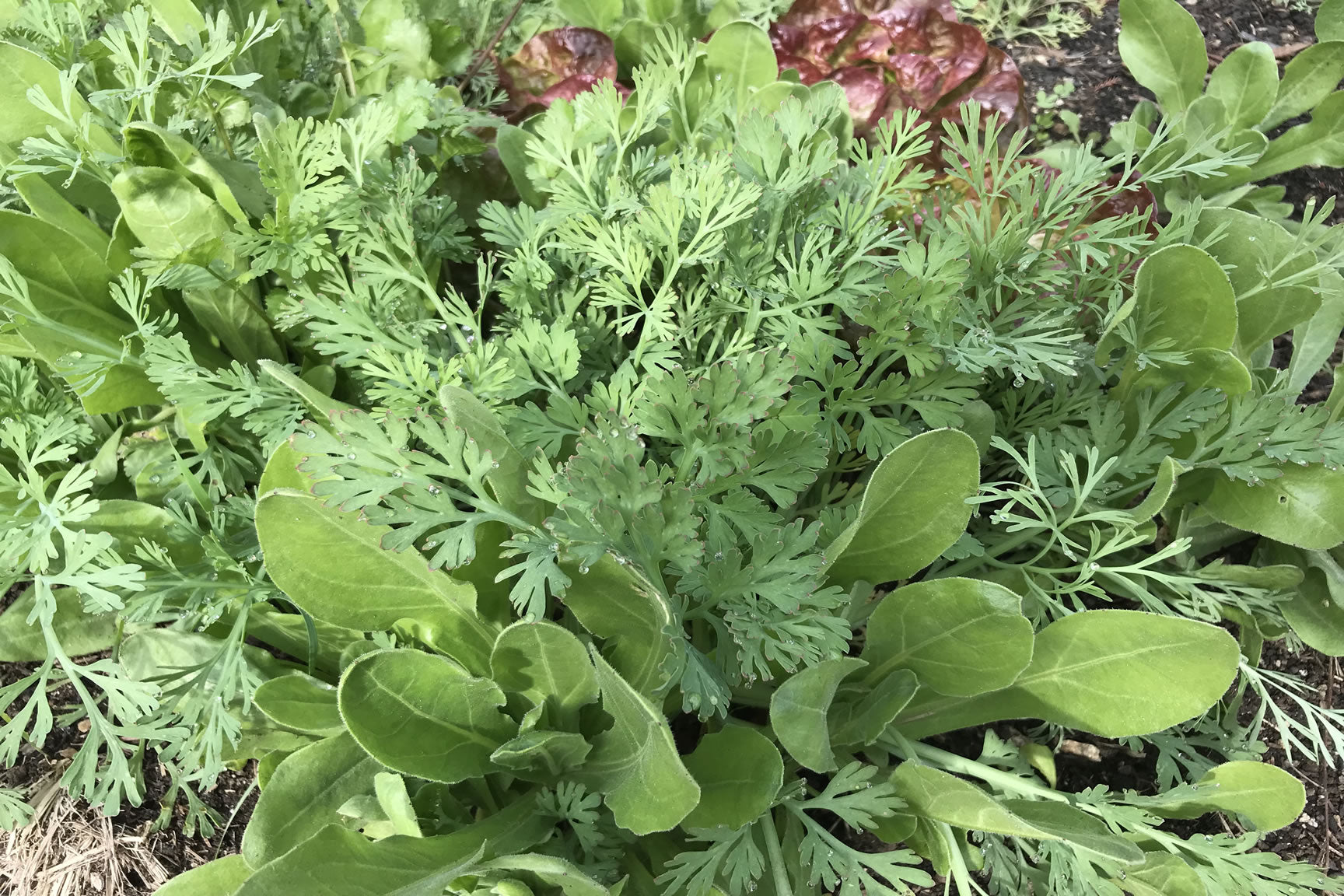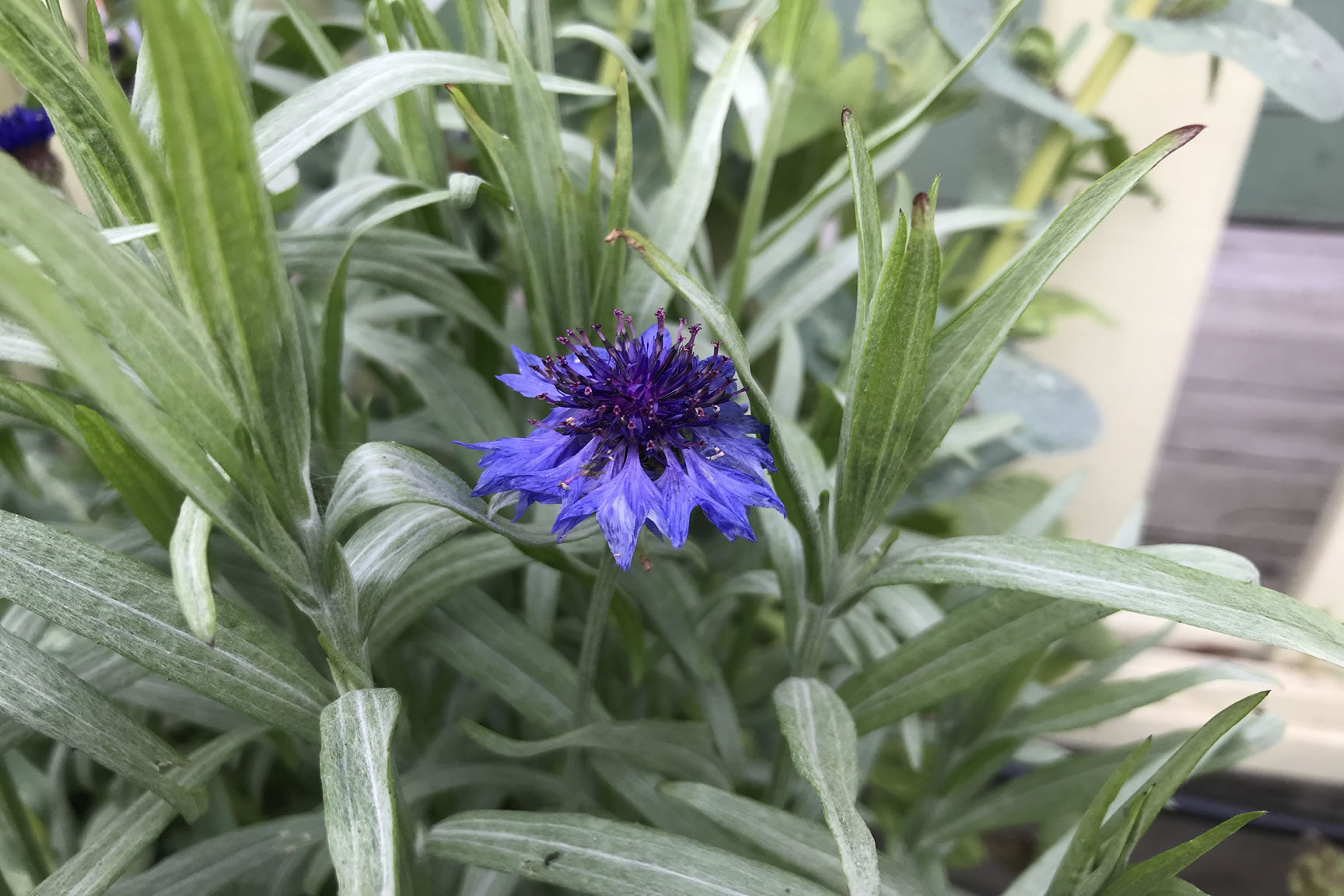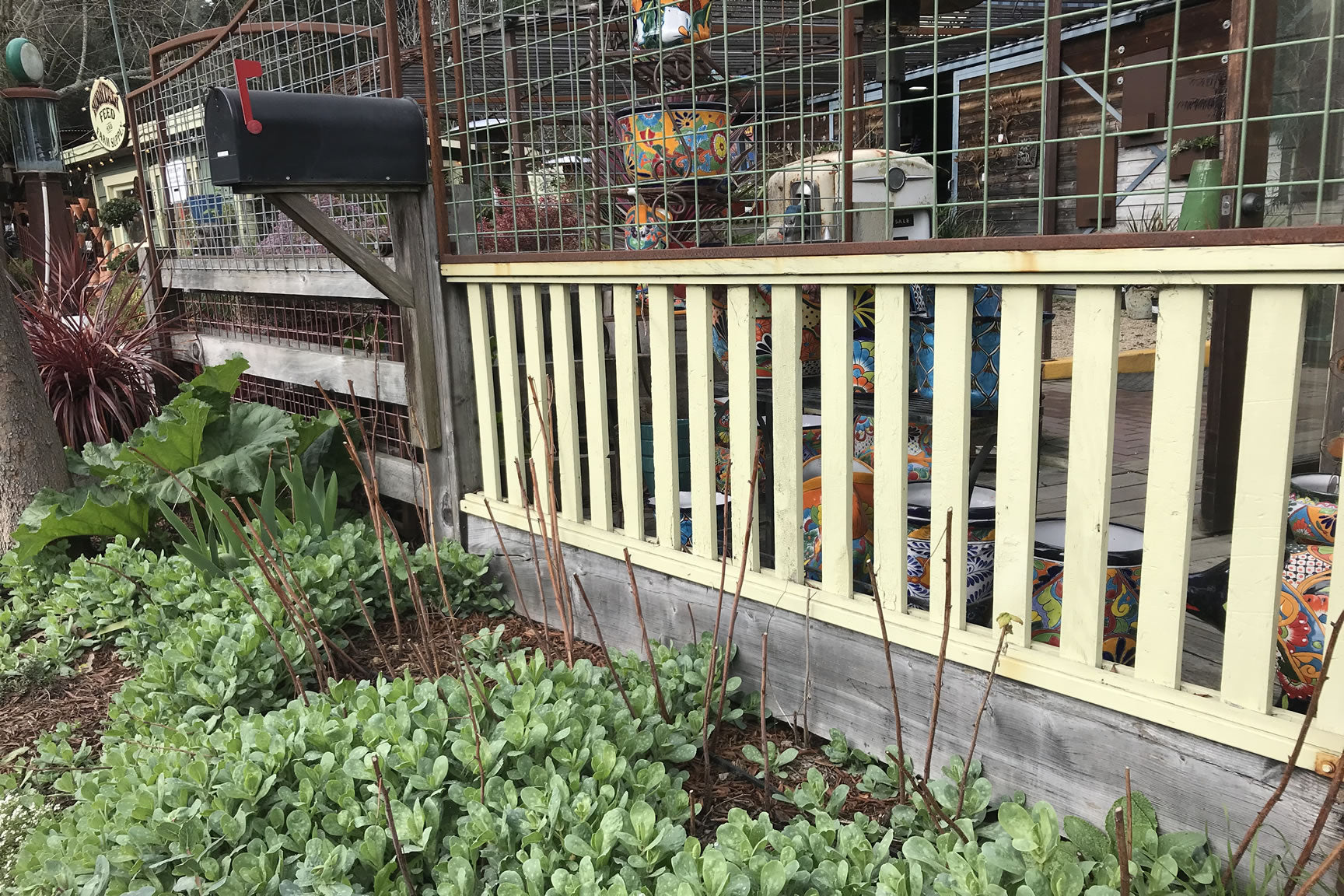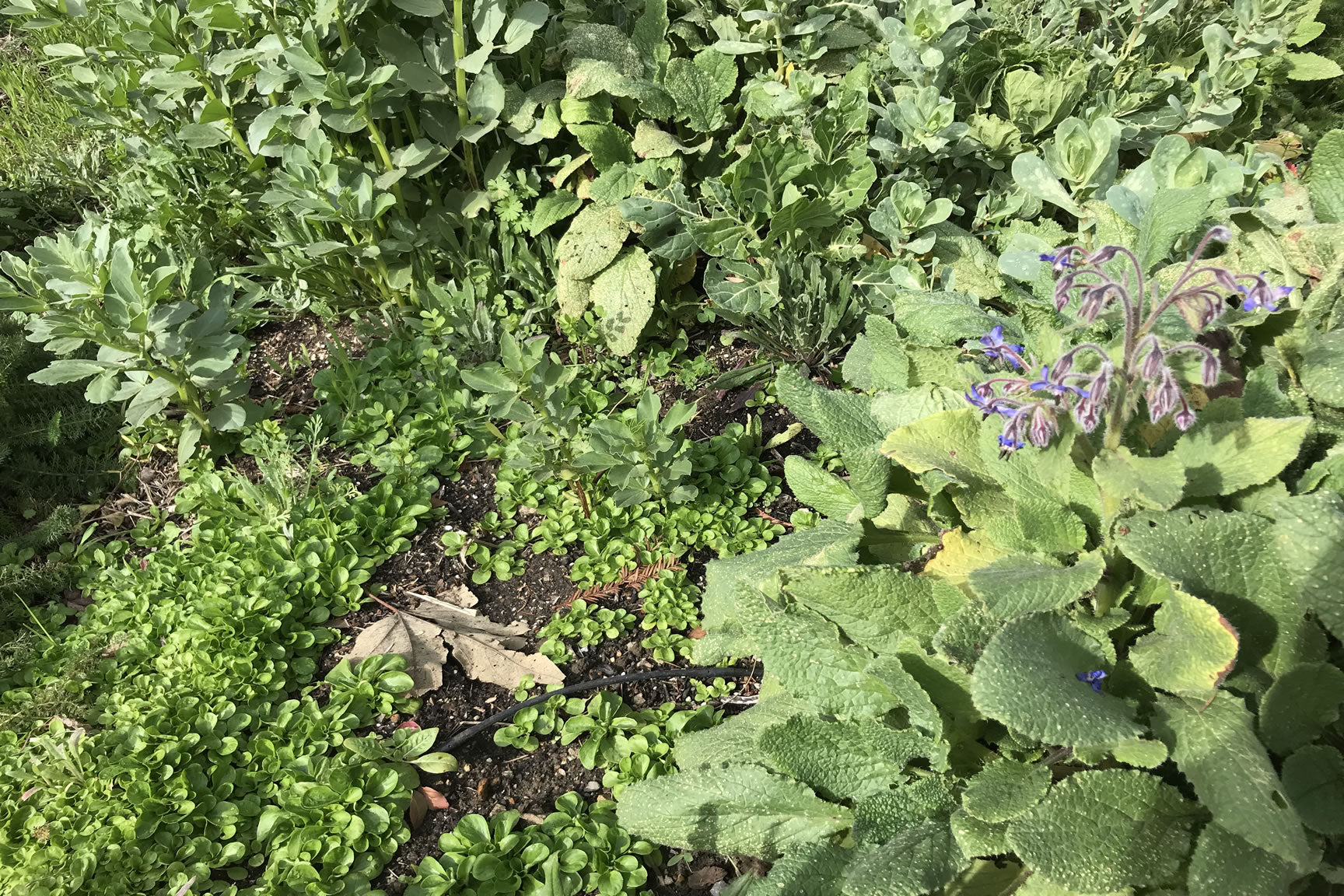- Continue Shopping
- Your Cart is Empty
February 2018 Garden Notes: Making Room, Making Blooms

The shortest month is upon us, or we are in it, or we are all here together, the days and the sky and the plants and the earth, the gardener and the gardened. And the weeds.
After years gardening in this space, the weeds are sometimes wildflowers, which is nice, if maybe a little harder. It tugged the heartstrings a little bit, the other day, to remove a fine patch of California poppy…which was smack in the middle of the mache patch, and certainly nothing you’d ever accidentally want to put in your mouth. That was the clincher, the thought of accidentally eating those lovely sea-green fronds, that taste awful as anything you’ve ever ingested. Out they came, with a sigh at the thought of their bright orange flowers that would never be…right here. There’s plenty in other parts of the garden though.
As for the rest of the garden, it has its highs and lows. The high points include the patch of fille de Kraut cabbages (the adorable ones with little-pointed tops like witches hats that we used in the Valentine’s Day Rose Kraut last year); despite battling overcrowding from overzealous borage and bachelor buttons, and a subsequent brush with powdery mildew, and slugs, the heads are finally forming well. This is the curse of the tenderhearted gardener, to try to leave too many garden friends sprinkled throughout the garden, only to find that the volunteers are crowding out the actual crops. The slugs and the mildew went way down once I got a little tougher on the rampant flowers. Sigh. Those beautiful blue blooms…are everywhere! I need to get over it! And I have, mostly. 
Other highs continue to be the fava beans, which are just beginning to flower. We have been experimenting with cooking and eating the greens, and they cook up soft and silky, excellent with garlic. The arugula is bolting and needs one last harvest, but maybe we’ll let some go for a bit and put some of those lovely little white flowers into spring salads.
Wait, did someone say spring?
It’s an indefinite boundary here in the Santa Cruz mountains, and one made all the more blurry by the changing temperatures and climate. We have already seen the first blossoms of established apricot and plum trees, though the bare-root trees in the edible department are so far just bare twigs, ready to be planted in the soil. All too soon they’ll be swelling into bloom, so now is the right time to plant, for optimal selection and ease of transplanting. I’m eyeing the raspberries, too. We have such a lovely stand, taking over a bed around our mailbox, that it is silly to think of planting more. I do though. Fresh raspberries are one of the delights of the home gardener, I’ve never really had enough of them.  Right now the early sprouts of cerinthe are filling in below the bare, prickly pruned legs of the raspberry canes, doing a lot esthetically for a plot that does admittedly look a bit raspy for several months of the year. In just a week or two, we’ll see the first curling periwinkle and purple blooms of that strange plant, cerinthe. Folks always stoop by and ask what it is, when it is in bloom, and are glad to know that the pea-sized seeds are easy to propagate. Wait, am I on about flowers again? Isn’t this supposed to be a vegetable garden?
Right now the early sprouts of cerinthe are filling in below the bare, prickly pruned legs of the raspberry canes, doing a lot esthetically for a plot that does admittedly look a bit raspy for several months of the year. In just a week or two, we’ll see the first curling periwinkle and purple blooms of that strange plant, cerinthe. Folks always stoop by and ask what it is, when it is in bloom, and are glad to know that the pea-sized seeds are easy to propagate. Wait, am I on about flowers again? Isn’t this supposed to be a vegetable garden?
Well, all plants must flower to fruit. And even those whose leaves we eat without needing to have their flowers fertilized, like kale and other leafy crops, and broccoli, and lettuces and the like, can still be of great benefit to the garden if left to flower. Flowers feed the bees and allow populations of plants to set seed and repopulate areas. It’s a dance, to allow some of this natural selection to take place, which helps to select for varieties and adaptations that are well suited for our hyper-local area. Despite what you might think, reading the upper part of these notes, we’re actually doing pretty well on that front in the garden right now; there are several open spaces that are amended and weeded, just waiting for a warm spell to do some more planting. It won’t be long before it is time to start seeds for the summer garden, can you imagine? It baffles me every year, how fast the time comes round again.
I brought coffee to the blueberries last week (well, the grounds, really) That’s how blueberries take their coffee, black and gritty and acidic, just the right thing to acidify the soil and hopefully set the pH back to something more appropriate for blueberries. They are beginning to wake up from their winter slumber, just shedding the last of their colorful leaves while the buds swell pink. The flowers, when they open, will look like the little bells of manzanita, which is also beginning to bloom in the high places. The bees know it and are busy checking every flower when the weather permits. I see the bees gathering oak pollen, too, which indicates that they are already thinking of raising brood, the next generation of bees that will begin the process of building up the population in time for the spring and summer gathering season. It’s a dicey time for bees, for if they build up too much, or too fast, and then we have weeks of rain, the hive will have too many mouths to feed and will starve after having made it all the way through the long winter. The beekeeper can help, by feeding sugar water in times of rain and cold this time of year. And yes, the gardener can help, too, by leaving flowers to bloom wherever they can, to feed the bees and the eyes of all who behold them.
Over to You
It’s part of our mission here at Mountain Feed to help you grow beautiful, sustainable, gardens whether you have sprawling acres of farm or just a tiny plot along the highway. Stop by and say hello on Facebook, Twitter, Instagram or Pinterest. Or, as always, you can do it the old fashioned way and come by the store to speak with one of our in-house experts.
